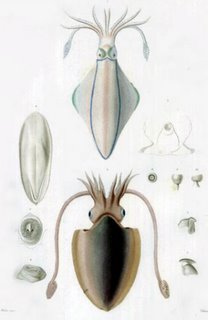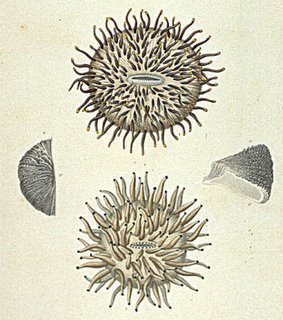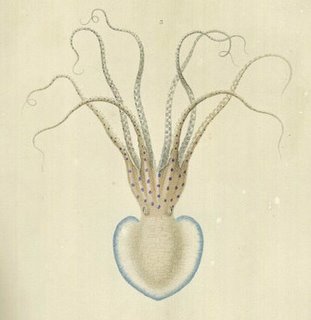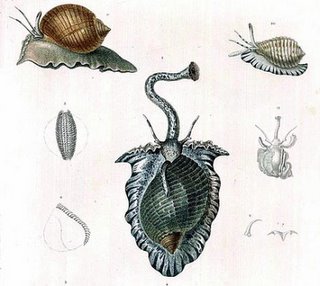





Between 1826 and 1840 the corvette L'Astrolabe made 2 voyages around the world and 26 volumes recording the official narrative, including 6 lithographic atlases were ultimately issued.
Jules Sébastien César Dumont d'Urville (1790-1842) had already established a name for himself when, as part of a French naval expedition to Greece in 1820, he recognized the true value of a recently unearthed statue. His advocacy resulted in the Louvre purchasing the Venus de Milo.
As a lieutenant aboard the Coquille under Louis Duperrey, d'Urville first sailed around the world in 1822 and he surveyed the Falklands, Tahiti, New Zealand, New Holland and other Pacific islands. After a promotion he commanded L'Astrolabe when it sailed in 1826 on a 3 year voyage whose original mission was to investigate the fate of the La Pérouse expedition (the original L'Astrolabe was among the lost ships).
d'Urville further surveyed the pacific region accompanied by illustrators who produced 243 plates documenting natural specimens, landscapes and native populations. During the second circumnavigation in 1837, along with the sister ship, the Zélée, he went as far south as Antarctica and a further 192 plates were illustrated. d'Urville was to die along with his family in a train accident.
The accounts of the journeys were issued as Voyage Pittoresque autour du Monde in French, known as Voyage Around the World in english.
- The Voyages of the Corvette L'Astrolabe at the Marine Biological Laboratory Woods Hole Oceanographic Institution.
- Sea Creatures - life below the surface at the State Library of Tasmania.
- There are quite a few ethnographic and landscape scenes from the voyages of L'Astrolabe on this page (starting at plate 204) and the following 2 pages at the National Oceanic and Atmospheric Administration Photo Library.
- Biography of d'Urville from the Antarctic perspective.
- Biography of d'Urville from the New Zealand perspective.
- Wikipedia on d'Urville.



















No comments :
Post a Comment
Comments are all moderated so don't waste your time spamming: they will never show up.
If you include ANY links that aren't pertinent to the blog post or discussion they will be deleted and a rash will break out in your underwear.
Also: please play the ball and not the person.
Note: only a member of this blog may post a comment.